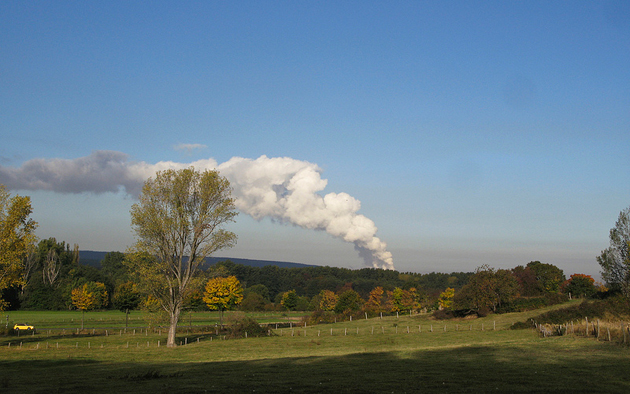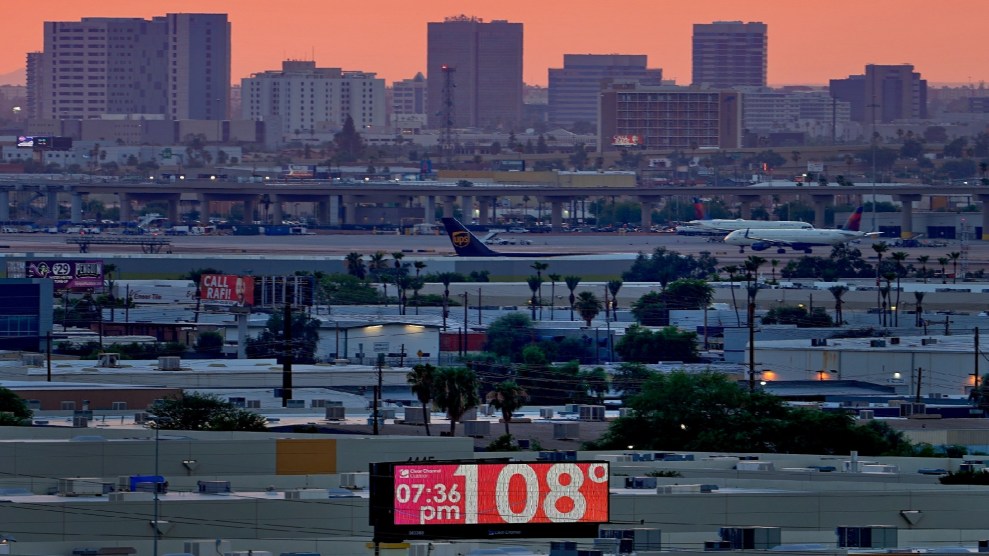
<a href="http://www.flickr.com/photos/axelhartmann/8091555761/sizes/c/in/photolist-dk2kC6-9zDBKn-51rjbe-8ybJV6-5QSre4-9dFEKo-aKDdKV-aKDfq4-aBc5Vh-51vxVm-9oBicL-7V1S5e-5EKPDf-9AeBsd-cijUH3-7aiBsi-7anejE-7aiwmp-7aniWq-7an7B3-7anh65-9AecHW-9AbfGz-9AbfKX-EwGqL-9AecVh-9AbfMv-39CcSC-9upEyU-9upGrd-9upEby-9umDNX-9umCst-9umFPt-9upFsC-9upHTd-9upFPQ-9AeuAg-9Ahs3S-7wEtuk-7anpn1-6Ymbtp-7xENDJ-9dCBk8-9dCAKg-9dCAUg-9dCBcB-9dFEfL-9dFEao-7av5nw-7arhjT/">glasseyes view</a>/Flickr
The Supreme Court announced today that it will take up the question of whether the Environmental Protection Agency can include greenhouse gas emission limits in permits it issues for new or expanding large polluters like refineries and power plants.
But perhaps even more significant was what the court chose not to consider: a challenge to the EPA’s broader authority to regulate greenhouse gases as dangerous pollutants under the Clean Air Act, and a challenge to its authority to issue emission limits for cars, both of which have been upheld by lower courts and remained untouched today.
For now, the justices chose to leave intact the legal basis for greenhouse gas emissions limits on new and existing power plants the EPA is expected to roll out over the next several years. Those limits could shutter many of the nation’s coal plants and discourage others from opening. Today’s announcement also preserves the Obama administration’s plan to slash climate change-causing pollutants from cars.
The justices’ decision “means that EPA’s legal and scientific findings that greenhouse gases harm health and the climate remains the law of the land,” said Natural Resources Defense Council senior attorney John Walke.
The question the court will consider is whether the EPA can use greenhouse gas emissions as a criteria, like it does with smog and soot limits, to determine whether large industrial polluters receive permits to build new facilities or expand existing ones. But even if the justices disallow such a permitting criteria, the EPA would still retain the authority to set greenhouse gas emissions limits for these polluters—just not written into the permits, per se.
The petition behind the permitting issue was brought by a coalition of industry groups, including the National Association of Manufacturers, which in a statement today said “stringent permitting requirements” would “impact every aspect of our economy.”
But Walke stressed that the permitting program “is not necessary to establish or enforce” greenhouse gas emission standards for power plants, like those proposed in September that are a signature product of new EPA administrator Gina McCarthy.











